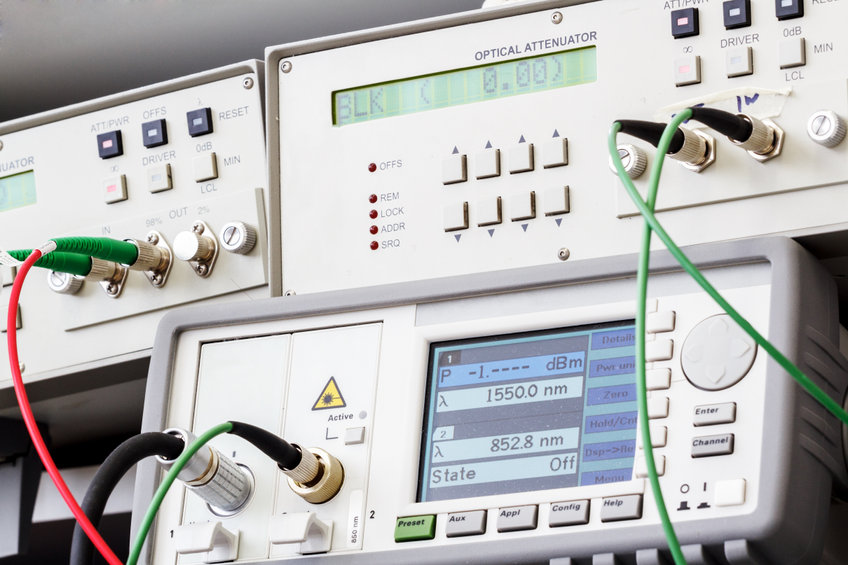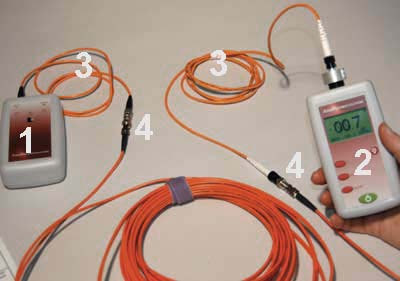Fibre testing equipment delivers accurate measurements for different applications.
Fibre testing equipment delivers accurate measurements for different applications.
Blog Article
Discover the Relevance of Optical Fiber Testing in Modern Telecommunications
In the realm of modern telecoms, the value of optical fiber testing can not be overstated, as it serves as the backbone for making sure network integrity and efficiency. What are the certain advantages that regular screening offers, and how might it form the future landscape of telecommunications?

Comprehending Optical Fibre Testing
Optical fibre testing is an essential process in telecoms that makes sure the integrity and efficiency of fibre optic networks. This testing includes a series of procedures developed to evaluate the physical and functional characteristics of optical fibres - robotic vision. Secret specifications examined consist of optical power loss, data transfer capacity, and mistake area, which are crucial for keeping top notch interaction links
The testing procedure commonly entails making use of customized equipment such as Optical Time-Domain Reflectometers (OTDR) and Optical Power Meters. OTDRs are utilized to determine and characterize mistakes, mates, and adapters within the fibre, while power meters measure the transmitted light signal strength to establish efficiency.
Furthermore, screening is performed at different phases, consisting of during setup, maintenance, and troubleshooting, to guarantee that the network satisfies sector standards and operational requirements. Compliance with requirements set by companies like the International Telecommunication Union (ITU) and the Telecoms Industry Association (TIA) is critical.
Advantages of Routine Examining
Normal screening of optical fibers yields many benefits that considerably enhance network reliability and efficiency. Among the key benefits is the early discovery of possible problems, such as breaks or deterioration in the fiber, which can bring about costly downtime if left unaddressed (ofda). By identifying these troubles proactively, telecoms companies can minimize service disturbances and make sure regular connection for their customers
Additionally, regular testing helps to keep the honesty of signal top quality. As optical fibers age, their efficiency can be impacted by variables such as ecological conditions and physical anxiety. Routine analyses permit the tracking of signal loss and total transmission effectiveness, making certain that the network runs at optimum levels.
An additional considerable advantage is conformity with market standards. Routine screening sustains adherence to governing needs, consequently minimizing legal and financial dangers connected with non-compliance. Moreover, it enhances the total lifespan of the fibre infrastructure by helping with prompt repair and maintenance.

Usual Checking Methods
Checking optical fibers employs different techniques to make certain the integrity and performance of telecommunications networks. Amongst one of the most usual techniques is Optical Time Domain Reflectometry (OTDR), which examines the whole size of the fiber by sending out a pulse of light and measuring the reflections triggered by flaws or breaks. This approach offers in-depth details about the location and seriousness of faults.
An additional prevalent method is using Optical Power Meters, which determine the amount of light transferred with the fiber. This method assists establish the loss of signal toughness, making certain that it fulfills sector criteria. resource Additionally, Aesthetic Mistake Locators (VFL) are used to recognize breaks or severe bends in the fibre by projecting a visible laser light right into the cable.
Insertion loss screening is also critical, as it quantifies the loss of signal power resulting from connections and mates within the network. The use of Polarization Setting Diffusion (PMD) testing assesses the influence of fiber attributes on signal integrity.
Each of these methods plays an essential duty in keeping the performance and reliability of optical fibre networks, inevitably adding to seamless telecoms operations.
Impact on Network Efficiency
The integrity and efficiency of optical fibre networks straight influence overall network efficiency. In contemporary telecoms, the effectiveness of data transmission counts heavily on the quality of the optical fibers utilized. Any destruction in the fibre's problem-- whether because of physical damages, contamination, or extreme flexing-- can cause increased depletion and signal loss, substantially impacting information stability and rate.
Routine optical fiber testing is important to recognize and correct possible problems prior to they materialize as network failings or downturns. Strategies such as Optical Time Domain Name Reflectometry (OTDR) and insertion loss screening allow service technicians to determine the performance of fiber web links accurately. These examinations not just assess the physical problem of the fibers however also make sure compliance with sector requirements, thus protecting the network's integrity.
Moreover, a properly maintained optical fiber network adds to minimized functional prices and improved client contentment, as end-users experience fewer disturbances and higher information rates. Eventually, the emphasis on rigorous optical fiber screening methods acts as a foundation for sustaining durable telecoms infrastructure, ensuring that provider can meet the growing needs for transmission capacity and connectivity in today's digital age.
Future Trends in Examining
As we look in advance, developments in technology are poised to improve optical fibre screening in telecoms. The increase of automation and man-made knowledge (AI) is anticipated to boost the efficiency and precision of screening procedures. Automated testing visit homepage systems can conduct detailed evaluations with very little human intervention, substantially decreasing the potential for mistakes and accelerating time-to-deployment.
Moreover, the combination of artificial intelligence algorithms will certainly make it possible for anticipating maintenance, enabling my sources network companies to predict prospective problems prior to they escalate right into failures. This aggressive method not just enhances network reliability however also maximizes functional costs.
Another arising trend is the advancement of mobile screening devices that supply real-time evaluation - ofda. These devices will encourage specialists to do on-site diagnostics rapidly, facilitating quicker resolutions and enhancing service high quality
The growth of 5G networks better necessitates the development of screening techniques. As transmission capacity needs increase, standard testing techniques may no longer suffice. Cutting-edge options such as optical time-domain reflectometry (OTDR) and advanced spectral analysis will end up being crucial in ensuring the stability and performance of high-speed links.

Verdict
To conclude, optical fibre testing is vital for ensuring the integrity and dependability of modern-day telecommunications networks. Routine screening practices not only help identify possible concerns such as signal loss and mistakes yet likewise add to enhanced network efficiency and customer complete satisfaction. As the need for smooth connection remains to grow, the fostering of advanced screening methods will play a critical function in preserving high-grade network criteria and supporting the developing landscape of telecoms.
Report this page